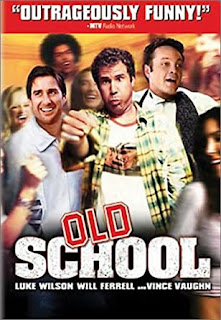Kino no Tabi; animated fantasy series, Japan, 2003; D: Ryutaro Nakamura, S: Ai Maeda, Ryuji Aigase, Kazuhiko Inoue, Takashi Ine
Kino is a girl traveling on her talking motorcycle, Hermes, across the countryside. She has no goal, and instead just wants to fleetingly visit various city-countries, refusing to stay longer than three days in any of them from fear of "taking roots". Along the way she encounters several flawed societies, but only seldomly intervenes to help them improve.
A deeply philosophical and unusual road movie fantasy anime series, "Kino's Journey" is not for everyone's taste, but those who will "get it" will love it more than those who will hate it because they didn't "get it". By taking on an episodic format, where the title girl and her talking motorcycle Hermes are the only two constant characters, while each episode is a stand alone story with different supporting characters, the director Ryutaro Nakamura leaned almost towards the experimental, in order to narrow the storyline towards some archetypal contemplations about humanity as a whole—mostly about dogma, fundamentalism, narrow-minded thinking and atavism of traditions. Episode 2 is a good example: Kino meets three hungry drivers whose truck got stuck in the snow, so she grudgingly kills three rabbits in the wild to save them from starvation. Three rabbit furs hang on a branch, in a symbolic image. She even helps the drivers pull the truck back on the road. They call her, she goes behind the truck—and realizes that they are slave transporters, and that they want to take her as a slave, as well, because it is their job. Naturally, she shoots all three of them, and returns the ring one of them gave her. The theme is not only thanklessness of the brutes, but also a wider meditation that, in a way, each creature lives by feeding off another one.
Episode 3 shows Kino arriving to a land where nobody wants to take money from her, and give her everything for free, because a priest deciphered a vague prophecy from their holly book that indicates that the world will end tomorrow. Naturally, the Sun rises again the next morning, the public is confused, but a new priest informs them that the end of the world will, by his calculation, occur only in a couple of years. When Kino later on finds out the prophecy is just a collection of poems by a sad poet written a long time ago, the story gives a critique of various religious movements and their prophecies so vague that they are useless. Episode 4 gives a gentle spotlight on Kino herself, by showing the flashback when she was 11, lived in a land where children went to a surgery at 12 to become obedient adults, but started questioning this tradition when she met a tourist from another country who found this nonsensical, causing her to run away from this city. Kino is thus a product of an outsider peeking through the propaganda of her own society, simply because he was not indoctrinated by it from the start, and is thus more objective. Kino's journey through all these lands is two-fold: not only is she running away from her original land, but by exploring as many societies as possible she also tries to reach a sort of scientific objectivity on humanity, eliminating bias by seeing these flaws from an outsider's perspective. A neat two-part episode in a Colosseum has her fight with other fighters, using even interesting moves (she uses the handle of her pistol to kick the handle of a sword from her opponent's hand), and in the end even uses her gun to shoot the King who watched all of this from his window. However, the last 5 episodes are weaker, lacking more finesse or ingenuity, while the final episode is especially a letdown, since it left a feeling as if Kino didn't reach any sort of destination or a final conclusion. Due to such an incomplete ending, the anime itself feels a little bit deficient. It is thus very good, but there is still something missing to be considered a true classic of its genre.
Grade:+++

















